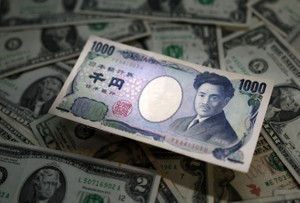By LISA VOGT/ Special to Asahi Weekly
January 21, 2020 at 07:00 JST
A feline lover friend of mine told me that black cats are better than white ones. They are, according to her, more people-friendly and trusting because they are less visible, especially at night, and therefore don’t attract the attention of predators.
“That makes sense. Cats are nocturnal, so being black enables them to disappear into the darkness,” I responded and was corrected with a five-dollar word, “No, cats are crepuscular.” Well, oookay.
Gotokuji temple, located in a quiet residential area of Tokyo’s Setagaya Ward, is said to be the birthplace of Japan’s ubiquitous luck-beckoning cat.
Legend has it that Ii Naotaka (1590-1659), a famous daimyo in the Edo Period (1603-1867) followed a cat that beckoned him into the temple. While there, a thunderstorm broke out, and the daimyo believed that the cat saved him from getting drenched.
There must have been more to the story, but who knows. Henceforth, he became a patron of the temple and even designated it as the family cemetery.
Because of this story, the mascot of Hikone Castle, which Ii completed construction of, is Hikonyan, a beckoning cat.
Despite Gotokuji being located in an out-of-the-way place, it is a popular spot for tourists from abroad because it provides a backdrop for cute photos.
According to the authoritative (if such a thing is possible) Maneki-Neko museum in Aichi Prefecture, a beckoning cat with its left paw upright is "hitomaneki," or beckoning people. If the cat has its right paw raised, it’s "kanemaneki," money. Ninety-nine percent of the beckoning cats at Gotokuji had their right paw raised. No doubt it’s because that’s the only type sold at the temple shop.
Almost half of the wooden plaques that people wrote their wishes on, the ema, were in non-Japanese languages. One woman must have offered a "maneki-neko" and an ema, as the handwritten message was almost the same. It broke my heart to read what she wrote: “I wish for good health, peace, happiness, financial stability and a long life together. And, I also wish for my husband to stay away from his mistress. Harmony and love and peace and prosperity for family, relatives, friends ...”
Painted on the ema is a white cat sitting in front of Kannon, the goddess of mercy. Its right paw is raised, so I think the goddess and the cat will work together to bring all that the writer wished for to fruition.
Beckoning cats these days come in all colors, including black, and they all bring good fortune to true believers.
* * *
This article by Lisa Vogt, a Washington-born and Tokyo-based photographer, originally appeared in the Dec. 15 issue of Asahi Weekly. It is part of the series "Lisa’s In and Around Tokyo," which depicts the capital and its surroundings through the perspective of the author, a professor at Meiji University.




















Stories about memories of cherry blossoms solicited from readers
Cooking experts, chefs and others involved in the field of food introduce their special recipes intertwined with their paths in life.
A series based on diplomatic documents declassified by Japan’s Foreign Ministry
A series on the death of a Japanese woman that sparked a debate about criminal justice policy in the United States
A series about Japanese-Americans and their memories of World War II
Here is a collection of first-hand accounts by “hibakusha” atomic bomb survivors.